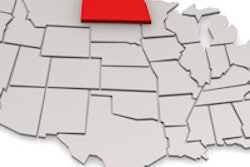
Note: As reported on DrBicuspid.com, the North Dakota Senate is considering a bill that would allow certified advanced dental hygienists to perform some procedures now done by dentists under a dentist's supervision. The Grand Forks Herald came out in support of the bill in an editorial column on February 15. The following is a response to the editorial by Paul Tronsgard, DDS, president of the North Dakota Dental Association (NDDA).
 Paul Tronsgard, DDS, president, North Dakota Dental Association
Paul Tronsgard, DDS, president, North Dakota Dental AssociationThe editorial regarding Senate Bill 2354 addressed the dental care problems facing underserved communities, acknowledging that they cannot be solved through a single approach.
But the piece failed to support a multifaceted plan that actually will provide care to people in need -- a plan that we [the NDDA] proposed during testimony February 10 before the North Dakota Senate Human Services Committee.
While SB 2354 proponents claim it as a "silver bullet" in solving access to and quality of care, it fails to specifically address many barriers to dental care -- including poverty, lack of oral health education, language or cultural barriers, and fear of dental care -- that are prevalent in North Dakota.
A frequent claim by proponents is that 40% of North Dakota counties have only one or no dentist. What is not mentioned is that Health Resources and Services Administration data show that seven dentists in the right locations in North Dakota will eliminate these designated health professional shortage areas.
Counties without a dentist in North Dakota also are unlikely in many cases to have enough patients to support the cost of providing dental services. We need to innovate collaboratively to find ways to get more care to underserved North Dakotans. All North Dakotans deserve a dentist.
“Seven dentists in the right locations in North Dakota will eliminate these designated health professional shortage areas.”
Proponents of this "Band-Aid" solution quickly point to other states or countries that have enabled midlevel dental providers, boasting that these examples are proof of the model's success.
We believe that idea is misguided. These programs have failed to demonstrate any ability to address access to care issues without substantial or complete government subsidies. We only have to look across our northern border to see one example of this model's shortcomings.
The Canadian midlevel dental program, which began in 1972, was fully subsidized by the government in an effort to increase the number of providers in rural areas. Organizers quickly saw that midlevel providers were just as likely to choose to live in urban areas as their dentist counterparts.
Nearly 40 years after it was started, the program was not self-sustainable, and it ended along with government subsidies. As a solution to provide care to more people in rural settings, this example has shown that it doesn't quite deliver as promised.
Models in the U.S. are not faring any better, as midlevel providers create unpredictable, unfunded mandates for states. The law passed in Minnesota nearly six years ago still is being partially subsidized by midlevel proponents and the taxpayers. Maine is struggling to cover the costs of its program and has resorted to funding by license fees collected from other practitioners in the state, creating another tax burden.
Alaska's program has been forced to survive via heavy subsidies by the foundation community and the Native corporations. This evidence shows that current models are unsustainable. What is the urgency to become only the fourth state to try the midlevel experiment?
North Dakota dentists are committed to ensuring all patients receive the best quality care from the highest trained professionals. Through the Seal! ND program, expansion of nonprofit dental clinics, improvements to dental Medicaid, along with other collaborative solutions, we will be able to remove the barriers that keep North Dakotans from receiving care that will make a lasting, positive difference for oral health in our state.
This plan is available at NDActionForDentalHealth.org, where our North Dakota-based Ten-Point-Plan to reduce barriers is highlighted.
Plans for midlevel providers produce unforeseen costs and have little if any evidence to show they deliver care to those in more rural areas. North Dakotans deserve better.
This column originally ran in the Grand Forks Herald. DrBicuspid.com thanks the North Dakota Dental Association for the permission to republish.
Paul Tronsgard, DDS, is president of the North Dakota Dental Association.
The comments and observations expressed herein do not necessarily reflect the opinions of DrBicuspid.com, nor should they be construed as an endorsement or admonishment of any particular idea, vendor, or organization.



















